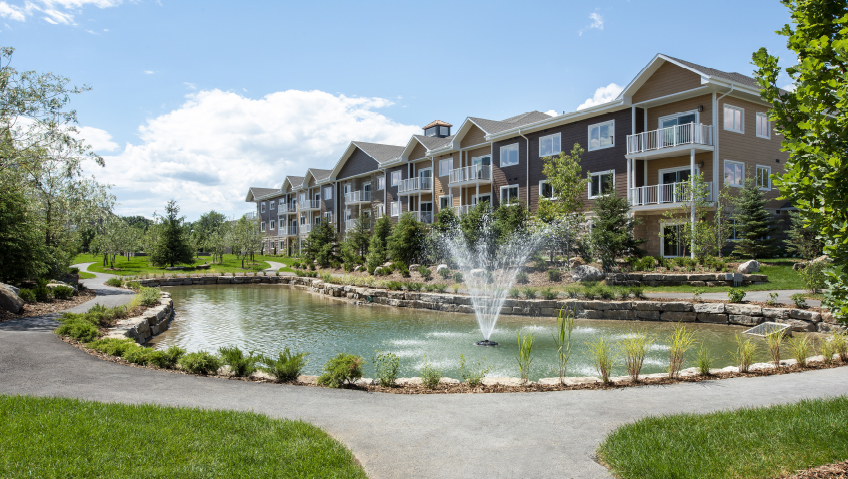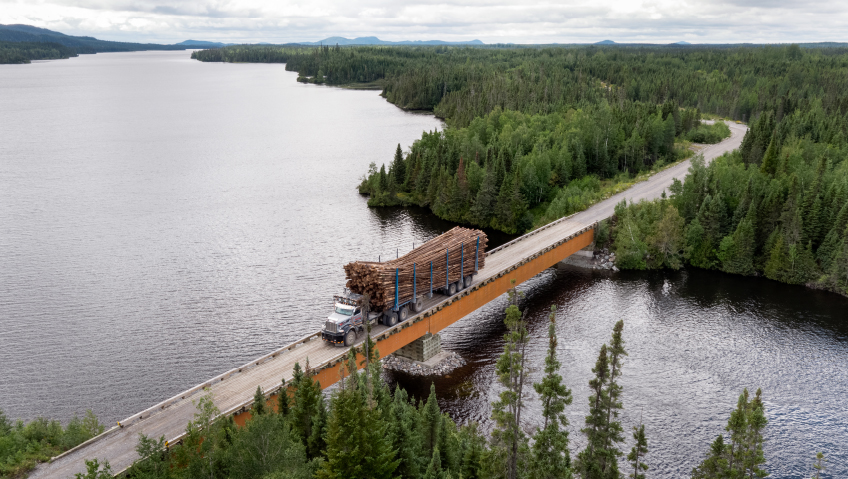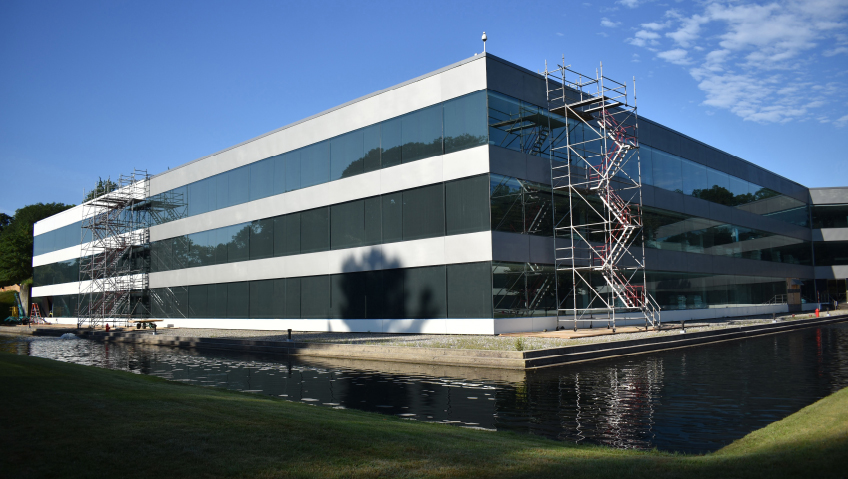With housing prices still out of reach for many prospective buyers, it’s heartening to know Regan Development, an Ardsley, New York-based, family-run business with more than 30 years of experience, has created residential, commercial, and affordable housing real estate projects worth over $750 million, enhancing thousands of people’s lives in the process.
Dedicated to the revitalized vibrancy and ongoing development of the communities in which it operates—with every new construction thoughtfully planned to enhance the surrounding area—Regan Development strives for community improvement, from housing options for young working families to seniors and retail establishments in urban and suburban locations.
Regan Development not only builds communities but also retains long-term ownership in them, contributing to the upkeep of the high standards set during construction. Whether it’s restoring and enhancing communities or developing new structures and renovating existing ones, the company delivers quality upgrades throughout New York, New Jersey, Connecticut, and Pennsylvania.
The company also works on general neighborhood community retail, mixing residential with community-oriented commercial spaces such as affordable daycares, medical, and non-profit office space.
Regan’s been conducting LIHTC (Low-Income Housing Tax Credit) work in New York and New Jersey since 1989, with more than 30 developments to their name over the past 30 years.
Created under the Tax Reform Act of 1986, LIHTC is a dollar-for-dollar credit for affordable housing in the U.S., allotting approximately $8 billion in annual budget to issue tax credits for acquisition, rehabilitation, or new construction of rental housing for lower-income households.
“It’s just our niche and what we do,” says President Larry Regan. “Most of our deals in one sense or another have affordable components.”
A second-generation family business composed mainly of Larry and his brother Ken, Regan Development recently ushered in the third generation when Larry’s sons, Jeremy and Gabe, were brought on board. Keeping business in the family is only part of the company’s recipe for success, Regan adds.
“We made a conscious decision early on in our career that we didn’t want to be a mega development firm,” says Regan. “A lot of the other tax credit developers that started around then now have an East Coast or national presence, but we chose to keep it slightly smaller, keeping overhead down, but still working hard and doing two or three tax credit developments in multiple states a year.”
Regan Development was able to achieve its goals while keeping the business manageable, with fewer employees in a smaller company, cultivating a family feel that embraces customers as well.
“It resonates with the local leaders and municipalities where we do business,” Regan says. “These are family assets, they’re not corporate assets, and we’re a family business. When we go in for approvals from local leaders and look them in the eye on day one before we even start a project, we tell them that these are our assets. This is what we have, and we keep them in our portfolio.”
This means Regan doesn’t get approvals and flip them to a developer that the town or city wouldn’t know, he adds. It’s a long-term commitment. “This is our business, we’ve been doing it a long time, and we plan on continuing to do it much longer.”
The company has worked on a number of noteworthy projects over the years, including the Lion Factory renovations in Troy, NY. A prime example of an industrial structure from the late 19th and early 20th centuries, the six-story, 246,000-square-foot Lion Factory Building is historically and architecturally important, and its renovation will respect and highlight key historic characteristics.
“We do a fair amount of historic adaptive reuse, probably eight or nine historic developments since the early ‘90s, and we like it,” Regan says. “We don’t get scared off by the requirements of rebuilding and we realize that the tax credit that comes at both the state and federal level are very good tools to help sources meet uses for development.”
The renovated building will contain 151 residential rental apartments, including 115 one-bedroom, 33 two-bedroom, three three-bedroom, and a live-in, two-bedroom superintendent’s apartment. A wide range of households and families will be able to afford the spaces, and there will be no income limitations on six extra rental apartments available at market rates.
Additionally, 25 of the one-bedroom apartments will be reserved for victims of domestic violence as part of Regan Development’s commitment to providing for the less fortunate.
The Lion Factory will also have 31,500 square feet of space on the main floor dedicated to local businesses and commercial offices.
“We’re also one of the first projects using New York State Clean Energy Incentive funding for a historic adaptive reuse,” says Regan. “It’s not zero energy, but for a historic adaptive reuse, it has a much higher level of green features and attributes than a typical historic adaptive reuse.”
The project required coordination between the New York State Historical offices, the National Park Service, and the New York State Energy reviewers, along with the HCR, the funders for the tax credits that provide the clean energy incentive.
Historic building renovations are also closely reviewed by historic aficionados, so Regan Development paid particular attention when energy rating the windows to ensure renovations wouldn’t affect any of the historic approvals.
“It was important just bringing everybody to the table to make this project an example of how green energy improvements and historic adaptive reuse can work together,” Regan says. “I think it’s being looked at by the state of New York’s Homes and Community Renewal offices as a positive example of how that can happen, bringing an all-electric-energy building and pairing it with a large historic adaptive reuse.”
The structure also boasts a geothermal field for geothermal heating and cooling, he adds, a big plus that really makes a difference.
“With the geothermal, that all translates to very reasonable energy costs and usage for our tenants,” says Regan. “You don’t usually see this level of green energy when you’re doing a historic adaptive reuse.”
Another recent and impressive project saw Regan Development collaborating with the State of New York Housing and Community Renewal and the Adirondack Sports Council to build 60 residential rental units in Lake Placid—with two admirable purposes.
MacKenzie Overlook, the LEED Gold certified housing unit named for Olympic bobsledder Ronald MacKenzie, will not only offer residents and workers in Lake Placid and all of Essex County much-needed new, high-quality housing; the building also housed athletes competing in the 31st FISU World University Games from January 12-22, 2023. The Regan Development team was proud to partner with The Adirondack Sports Council to provide housing for these exceptional student athletes.
“We were called in by the municipality, the county, the local hospitality industry trade group in Lake Placid, and most importantly, by the state senator,” says Regan. “They were trying to solve a problem in Lake Placid for service employees at the hospitality industry spots because it’s basically a tourist area that provided nowhere to live, with rents skyrocketing.” Prior to this project, no new affordable housing has been created in Lake Placid or Essex County over the past 10 years.
The Adirondack Sports Council took occupancy in early September and vacated following the Games in January, with permanent tenants moving in to the building on the first of March, which was always the plan. “It’s a great story, and we were pleased and proud to be a part of it since before we even put a shovel in the ground, making not only the host spot for the Olympic student games but also the workforce housing on a permanent basis,” says Regan.
This kind of drive and commitment is typical for a company that isn’t afraid to go into communities when they need help the most—meaning when they’re “down on their luck,” he adds. This is why Regan Development doesn’t shy away from projects where towns may have lost a major employer, where the economy has gone south, or where the median incomes are going lower.
“Everything’s cyclical,” Regan says. “We did our first deal in Buffalo about 18 years ago, and now it’s going through a resurgence, where the rents are increasing rather than decreasing, multicultural immigrant populations are finding it a great place to live, and it’s becoming a thriving and dynamic place. Also in Albany—again, same thing. People are looking for places to live that are affordable.”
Regan Development is striving to design something that’s green-built, zero energy, and all-electric, and do it in a way that provides new, clean, energy-efficient housing to communities receptive to what the company wants to do, Regan says. “And if they want the workforce housing and they want the commercial community components that go with it, that’s what we’re looking to accomplish.”
With a third generation now ready to help achieve those goals of reaching further and doing more, company milestones include looking to reach out into Massachusetts while continuing to do amazing projects in the home states of New York, New Jersey, and Connecticut.
“We just enjoy working with the state where we’re working in the municipalities,” Regan says. “We’re all about doing projects that will improve communities. We’re not just generic builders, we’re looking to find those transformational types of projects that transform communities into a better place.”






